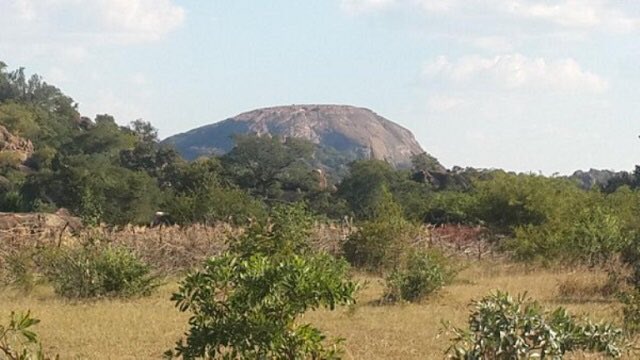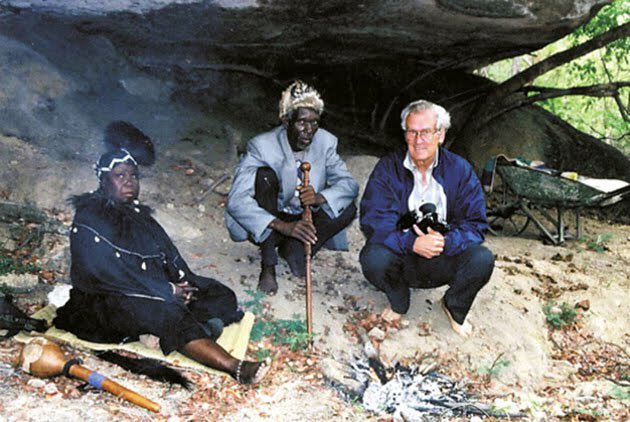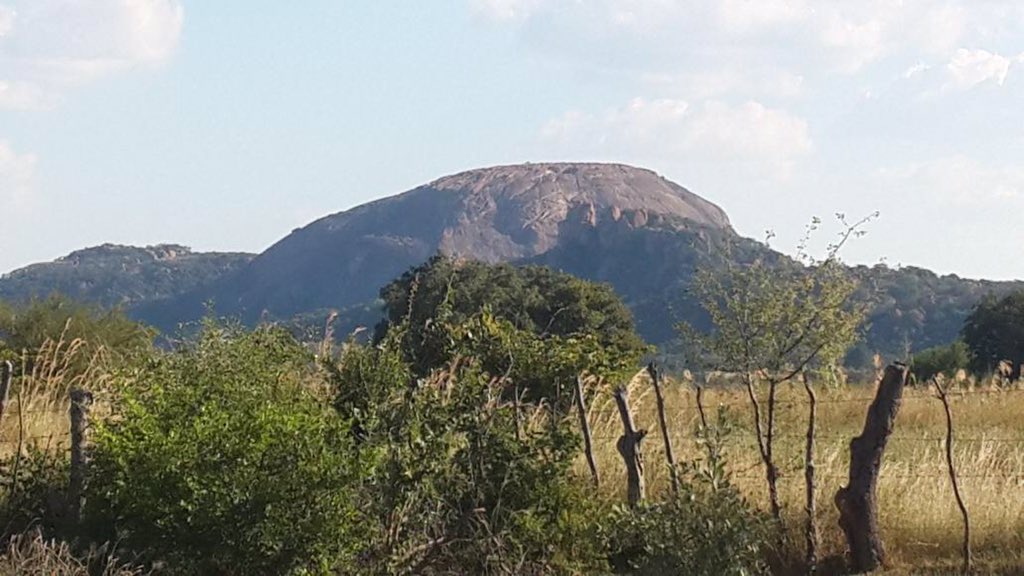Worship system
The Njelele god was a god of peace and not war. Ba-Kalanga and the Nzi Mabgwe (village or homestead of stone) builders had always been a peaceful people who were accommodative of the tribes that were immigrating from the whole of Southern Africa.
The Njelele god was a god of peace and not war. Ba-Kalanga and the Nzi Mabgwe (village or homestead of stone) builders had always been a peaceful people who were accommodative of the tribes that were immigrating from the whole of Southern Africa.
Some were coming voluntarily while others were victims of natural disasters & wars.Njelele as a regional shrine attracted different tribes who made pilgrimage to it.The worship system never looked @ individual’s problem but community/regional problems - a major integrating force.
The Njelele area was peaceful prior to the arrival of the Ndebele and during the reign of Mzilikazi (excluding his first two years of absence). In fact Mzilikazi executed his indunas for their failure to be accommodative of the indigenous people they found here, which was a major
shift from his policy to build a nation together with them. This is notable in his submission to the Njelele god and paying tribute with a heard of black cattle, for he wanted to be at peace with the land.
Mzilikazi was careful to treat the shrines of Mwali (Mlimo) with respect...” (O. Ransford 1968). In other words Mzilikazi paid tribute to the Mwali priests and its indigenous people. The heir to Mzilikazi’s throne (Lobengula) was removed from the royal residence due to threats..
from his own kith and kin and he went to live under priestly Malaba Ncube (P. Nyathi Sunday News articles).
The Mwali worship system had been in place probably during the Mapungubwe empire as well as the Nzimabgwe and Kame empires. The last well known trek of this cult was from Vendaland. This was brought by the Lubimbi/Malaba clan during which it had several stopovers between the...
Transvaal and Njelele of Matopo. The stopovers included Tjizeze, Makwe, Dula/ku Mbudzi and Njelele (Patrick Hadledzi Malaba - interview May 2010, also P.Nyathi 2004, I.G. Cockcroft 1972, J. Wetzel 1983). Rain making shrines were later decentralized under the guiding spirit of...
Njenjema the founding priest of the current Njelele. It is, therefore, possible to find other shrines regarded as Njelelele or a claim that other shrines such as Manyang’wa were established by Njenjema. There are also stories alleging that Njenjema sparked the liberation war in..
1893 (Matebele-Anglo War)and was later short dead by Cullen Raid. This can only be the second or third priest after the real Njenjema. The Mwali of Njelele story is an unexplored intangible inheritance of Zimbabwe. Unless the rain making worship system of Njelele is fathomed a...
greater chunk of the history of Zimbabwe will remain unresolved. History authors have unknowingly or deliberately avoided telling the story of Ba-Kalanga which unlocks deeper understanding of the history and life dynamics of the people of Southern Africa prior to colonisation,
Njelele included. Njelele worship system was never fixed on a particular rock or mountain as people are made to believe. Njelele ‘cult” was a highly mobile one. It’s not the mountain that had the powers neither of rain making nor of healing the nation against pestilences. The...
Mwali god was not always on the specific mountain of Njelele in Matopo. This is simply the last known place of national significance where Mwali’s voice was heard. Just like the Ark of the Covenant in times of Moses this power was moving with the chosen house of priests. The...
voice and power of the “cult” was where ever the priests pitched their worship “tent” of Mwali (ntolo wa Mwali).
The historical establishment of Njelele
“In 1968 Chief Malaba, then approximately 90 years of age stated emphatically that his father [Grandfather] had come into present day borders of Zimbabwe as youth, and that the Njelele wosana (priest) Njenjema who established the...
“In 1968 Chief Malaba, then approximately 90 years of age stated emphatically that his father [Grandfather] had come into present day borders of Zimbabwe as youth, and that the Njelele wosana (priest) Njenjema who established the...
Njelele shrine arrived long before him during the Mambo dynasty. He supplied the priestly names as Njenje[ma], Pinga (Pininga), Mbikwa Ncube (who was priest during Mzilikazi era), thereafter, it was Shulu (Tjulu) Timila Ncube. After Shulu, Nyaya Ncube’s son Tabulawa Moyo of the..
Lozwi clan took over. This was a departure from the correct family.
Nkombogwa Ncube claimant to priesthood appeared from Gwanda district. Tabulawa opposed the claim, and a cursing session took place on top of Njelele Mountain, not long Tabulawa died in 1960 and Nkombogwa...
Nkombogwa Ncube claimant to priesthood appeared from Gwanda district. Tabulawa opposed the claim, and a cursing session took place on top of Njelele Mountain, not long Tabulawa died in 1960 and Nkombogwa...
succeeded. After Nkombogwa was took ill two years later there was no claimant,” (Cockcroft 1972, J. Wetzel 1983). The word Njelele probably comes from Njenjema the founding priest of the Njelele Cult. Njelele is also a Kalanga name for a type of hawk which were (are) believed to
symbolize imminent rain if they are a group and fly in circular manner “continuously” (mayile). Njenjema was of Ncube (Wudo) - Lubimbi/Malaba clan. Njelele has always been manned by Priests of Ncube (wudo). The clan totem indicates that baboons/monkeys are a taboo to eat.
Baboons are known for staying on mountains they see things from afar. They are like guards of a territory. There is a common saying in Kalanga when the new moon appears its said; hhulo wakabon’wa ne wudo meaning ...
yesterday the moon was seen by baboons. It is this perceived advantage of the baboons that cements the Ncube (wudo) people to be custodians of the mountain god of Njelele. They see things good or bad first on behalf of the community.
The buried knowledge systems
In summary, Ba-Kalanga have always been mining and smelting , they were iron smiths, wood carvers, art and craft, architects, with well defined governance, history preservation systems and the art of intelligence and spying - bumhihha, bukadzaha,
In summary, Ba-Kalanga have always been mining and smelting , they were iron smiths, wood carvers, art and craft, architects, with well defined governance, history preservation systems and the art of intelligence and spying - bumhihha, bukadzaha,
bukumbudzi nebumdambeli. Ba-Kalanga have always been a sharing community belima belagisilana, bekokana kumbizi. They are and were probably the most accommodative tribe in Southern Africa especially if you consider the trek of Baleya, BaVenda, BaBirwa, BaPedi, BaLozwi, Ndebeles..
etc into BuKalanga. Ba-Kalanga had the most well defined national worship systems, instruments of worship, entertainment, songs and dance, fashionable attire to mention but a few. These are all buried indigenous knowledge systems that require urgent action from all.
A history of Zimbabwe that fails to understand Njelele, Ba-Kalanga, the ruins found in Zimbabwe, South Africa and Botswana is a fallacy and deception by the colonisers who sought simplified languages and history for their convenience. Unless we think beyond the concealing words..
Shona, Ndebele and Setswana then the above valuable indigenous knowledge systems remain buried. Zimbabweans and Africans have no roots that can drive their pride. Then the younger generation has no choice but to think, behave and embrace the west or the east and remain with no...
‘space’ of their own in this world. Our resources and inherent knowledge passed on to us by our ancestors shall remain with no value to us, the region and the world at large. We shall forever be on the receiving end other cultural agendas.
Ndaboka
Ndaboka
BAKALANGA doing the Hosana Dance.

 Read on Twitter
Read on Twitter






